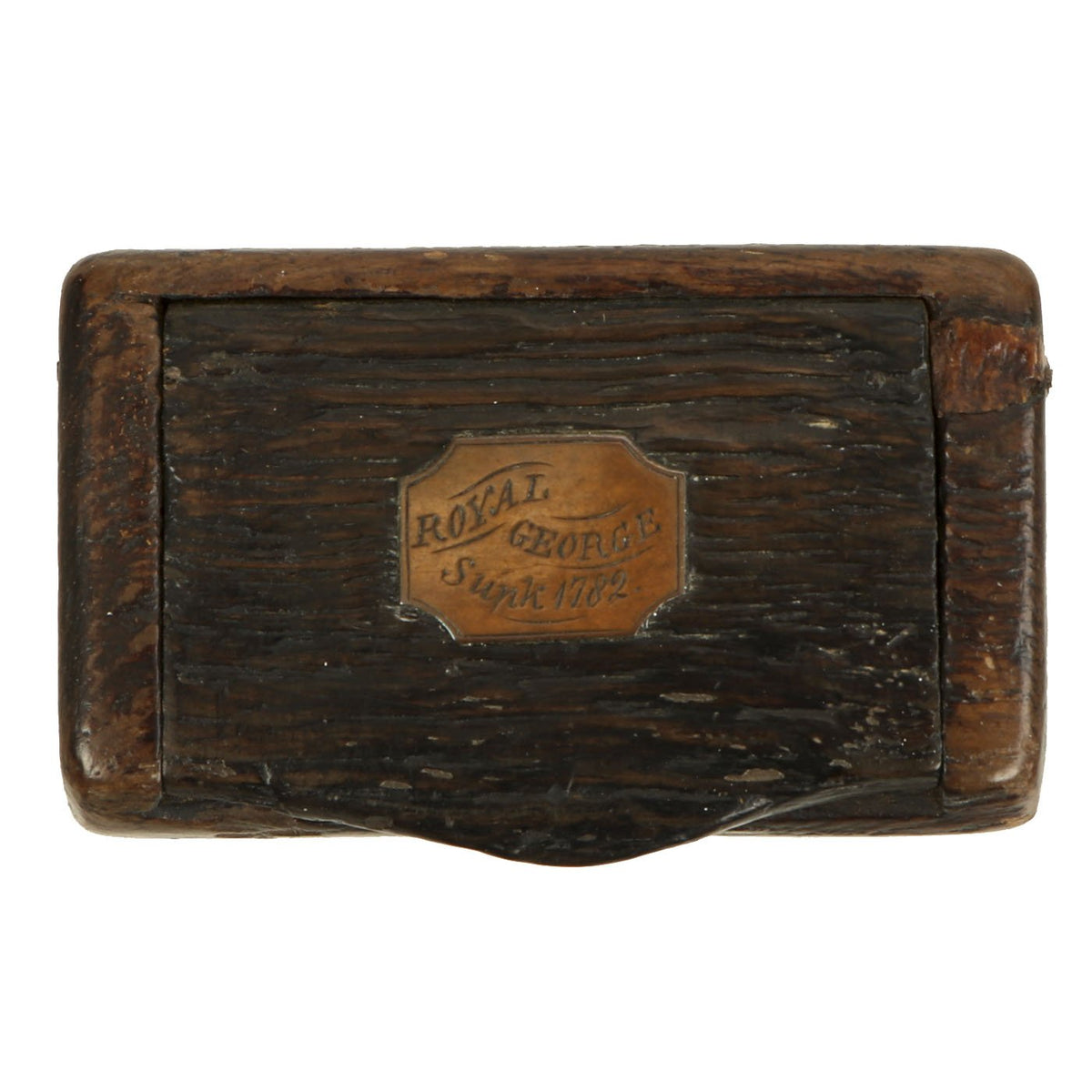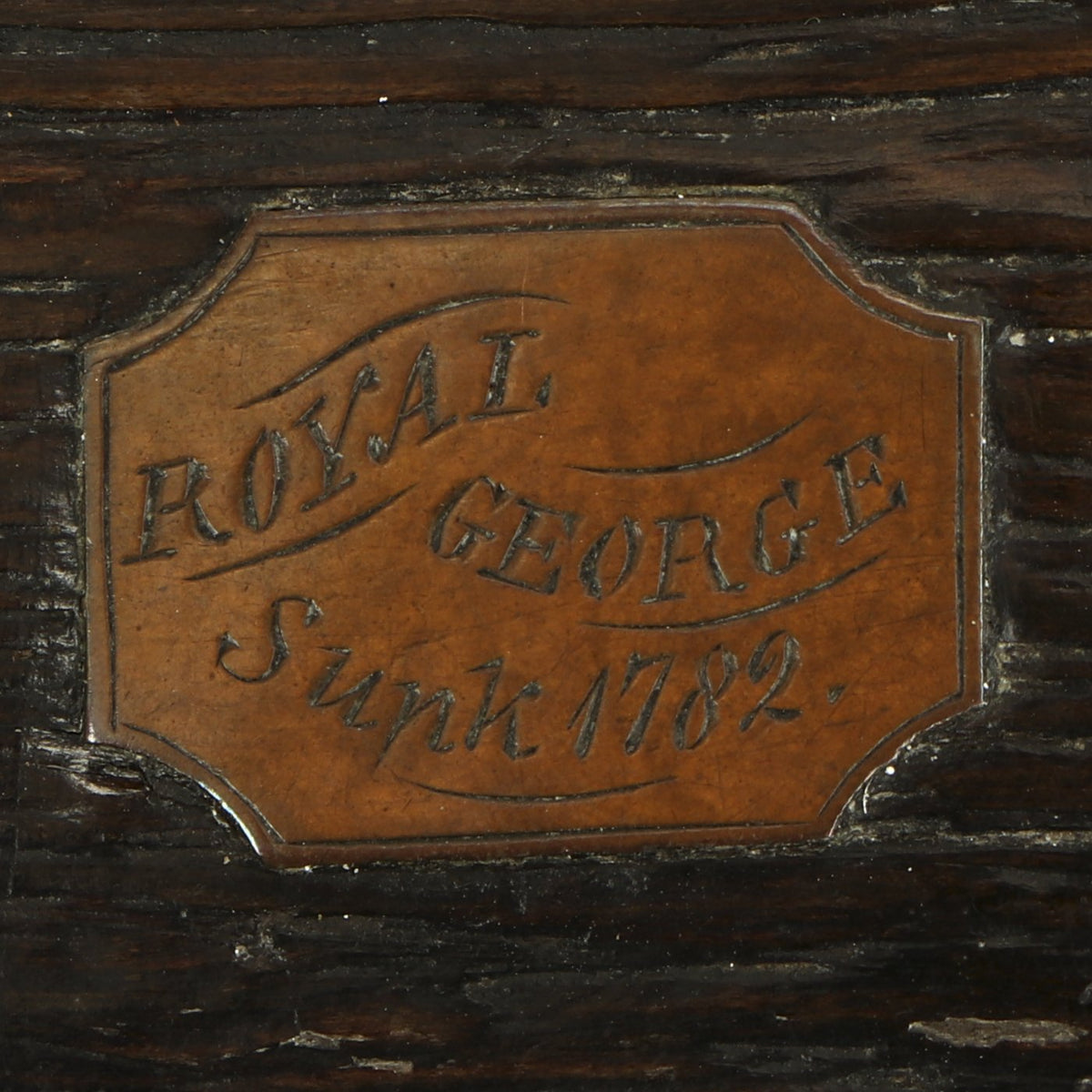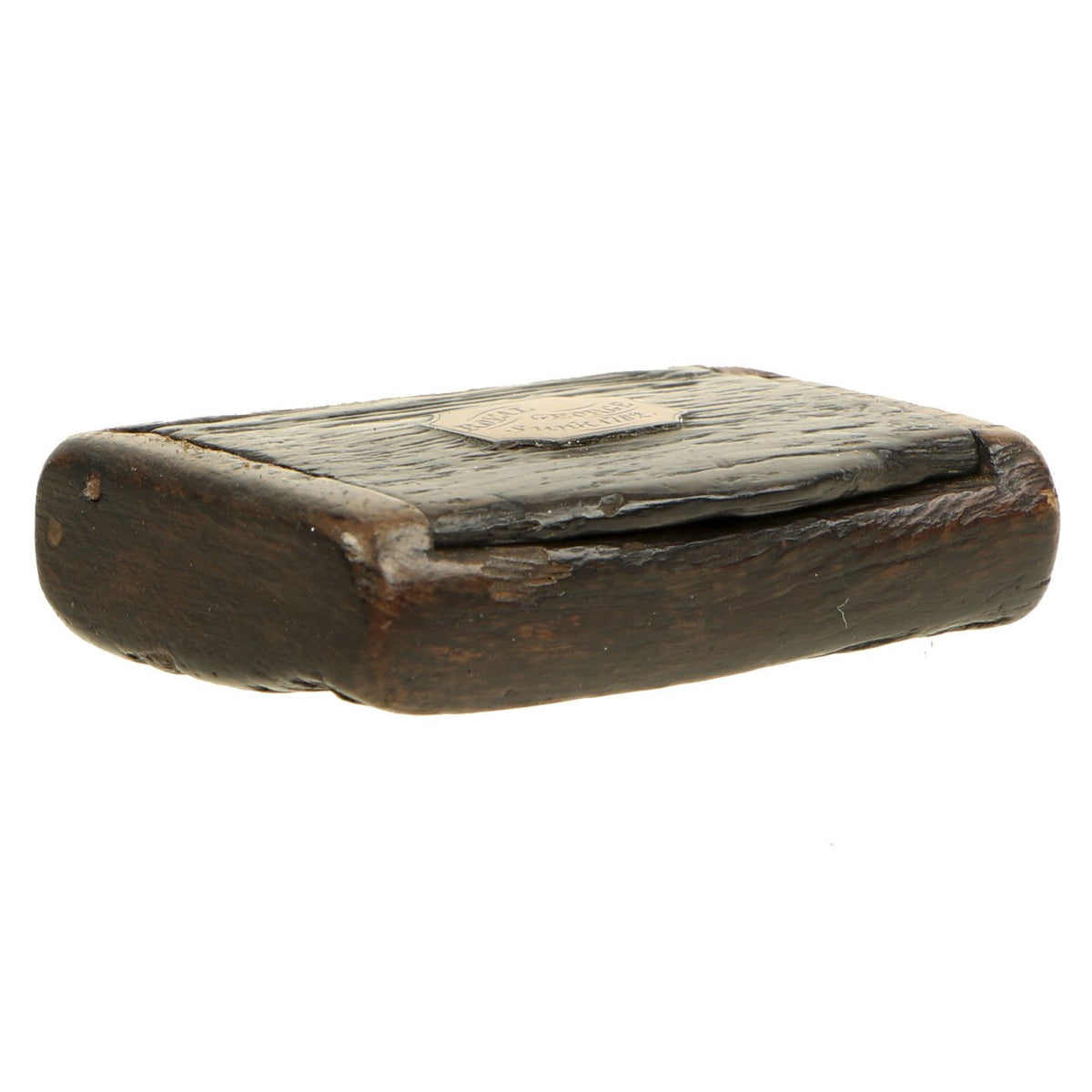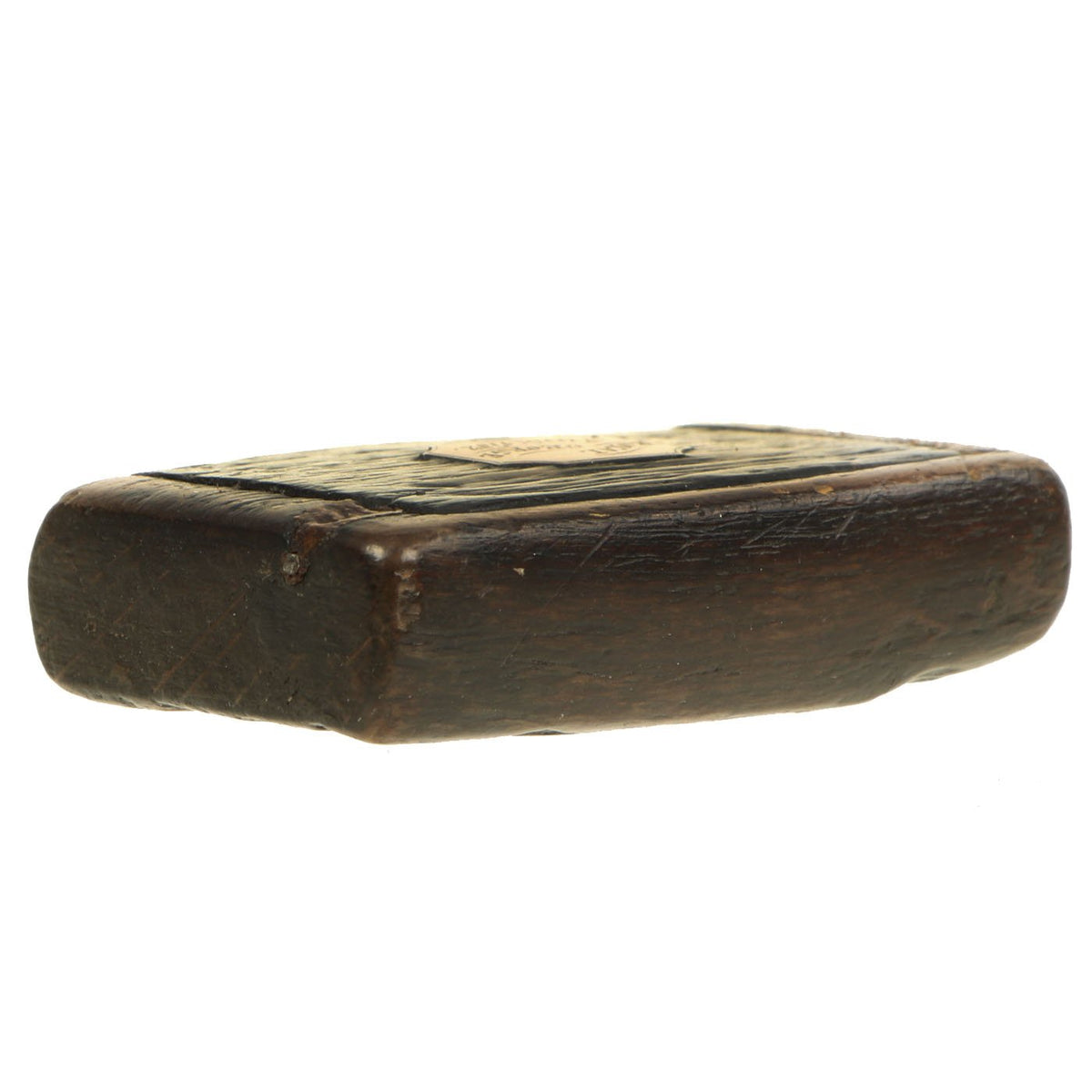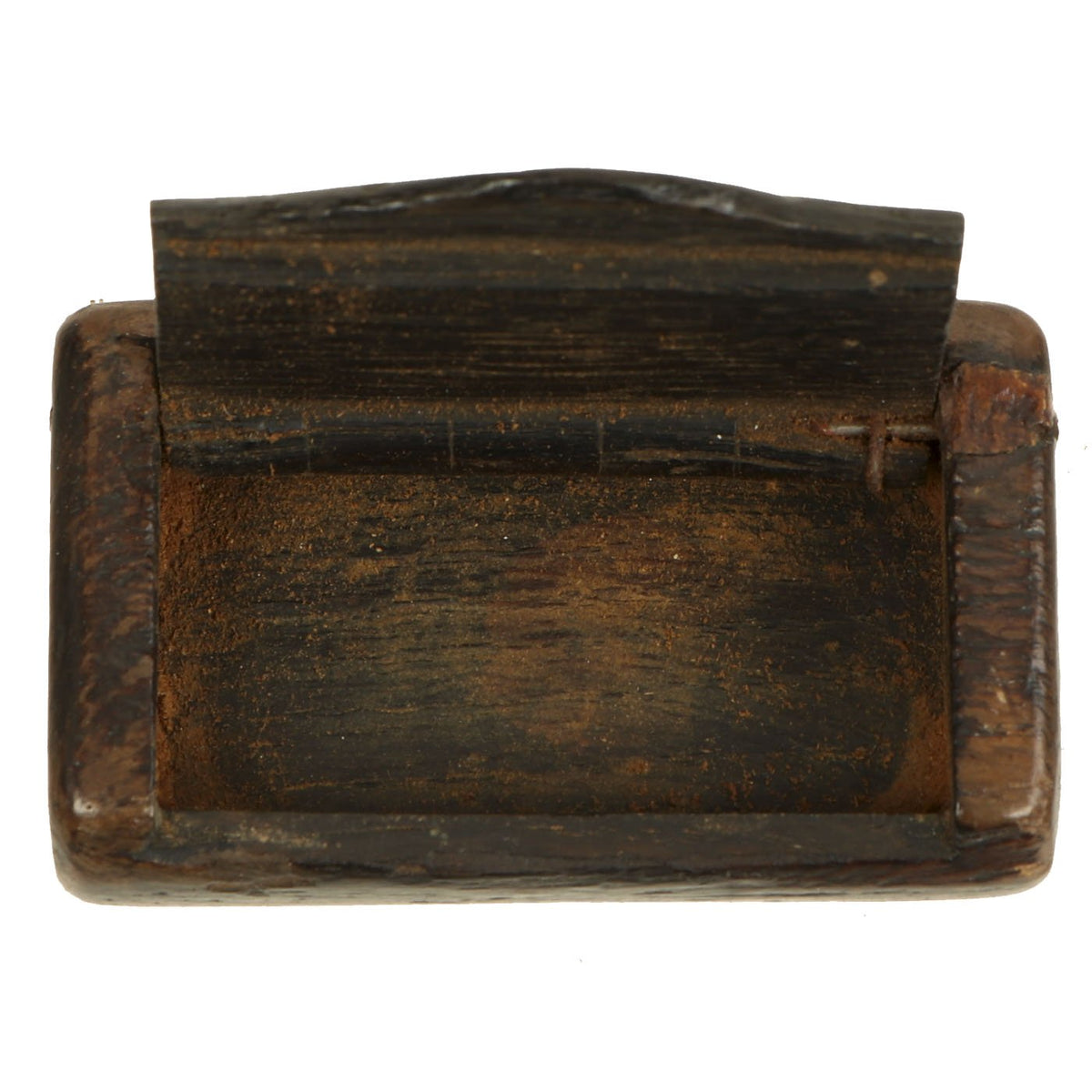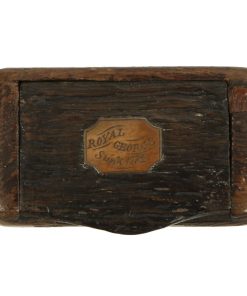Original British Early Victorian Wooden Snuff Box made from Oak Salvaged from HMS Royal George – Sunk 1782 Original Items
$ 595,00 $ 178,50
Original Item: One of a Kind. One of Britain’s most famous Men-o-War, H.M.S. ROYAL GEORGE was launched on February 18th 1756 at Woolwich Dockyard, London. At that time she was the largest War Ship in the World, weighing 2,047 tons and carrying 100 Guns. She measured 178 feet in length at the gun deck and became the FLAGSHIP of the famous ADMIRAL SIR EDWARD HAWKE. On November 20th 1759, she was leading the British Fleet at the BATTLE OF QUIBERON BAY when she sank the French battle ship “SUPERBE”. She later took part in the BATTLE OF ST. VINCENT on January 16th. 1780.
She the returned to Portsmouth England for routine maintenance, and on August 29th of 1782 the ship was fully loaded with over 1200 crew and, maintenance workers and family members as she prepared to pull into the dock. They were in the process of having had her cannons moved to ease re-coppering the keel when the ship completely capsized, taking between 800 and 900 lives. This was the greatest Naval loss of life in British waters at that time. There was a public outcry and a Fund set up at LLOYD’S COFFEE HOUSE in London for the families of the drowned. This Fund developed into the LLOYD’S PATRIOTIC FUND in later years that presented Swords and Vases to many heroic British Sailors for their exploits.
Several attempts were made to raise the vessel shortly after she sunk, both for salvage and because she was a major hazard to navigation, lying in a busy harbor at a depth of only 65 ft (20 m). Some cannon were recovered, but it wasn’t until 1839 that large scale operations were able to be completed. Many of the remaining timbers were brought up, and various items were fashioned in memory of the vessel.
This is one such item, a small Victorian Snuff Box, measuring 2 5/8″L x 1 5/8″W x 5/8″H. It is a simple design, with an iron pin hinge. The top of the box has a brass plaque which reads: ROYAL GEORGE / Sunk 1782. The lovely texture and grain of the oak timbers it was made from can still be seen.
Condition is very good, though there has been a repair to the right side of the hinge. A great piece of British Naval history!
Fast Shipping with Professional Packaging
Thanks to our longstanding association with UPS FedEx DHL, and other major international carriers, we are able to provide a range of shipping options. Our warehouse staff is expertly trained and will wrap your products according to our exact and precise specifications. Prior to shipping, your goods will be thoroughly examined and securely secured. We ship to thousands clients each day across multiple countries. This shows how we're dedicated to be the largest retailer on the internet. Warehouses and distribution centres can be located throughout Europe as well as the USA.
Note: Orders with more than one item will be assigned a processing date depending on the item.
Before shipping before shipping, we'll conduct a thorough inspection of the items you have ordered. Today, the majority of orders will be delivered within 48 hours. The delivery time will be between 3-7 days.
Returns
The stock is dynamic and we cannot completely manage it because multiple stakeholders are involved, including our factory and warehouse. So the actual stock may alter at any time. It's possible that you may not receive your order once the order has been made.
Our policy is valid for a period of 30 days. If you don't receive the product within 30 days, we are not able to issue a refund or an exchange.
You can only return an item if it is unused and in the same state as the day you received it. You must have the item in its original packaging.
Related products
Uncategorized
Uncategorized
Uncategorized
Armoured Fighting Vehicles of the World: AFVs of World War One (Hardcover Book) New Made Items
Uncategorized
Uncategorized
Uncategorized
Uncategorized
Uncategorized
Uncategorized
Uncategorized
Uncategorized
Uncategorized
Angolan Rebel 1970s era 60mm Inert Display Mortar from Angolan Civil War Original Items
Uncategorized
Uncategorized
Australian WWII Owen MK1 Machine Carbine SMG Custom Fabricated Replica with Sling Original Items
Uncategorized
Uncategorized
Uncategorized
